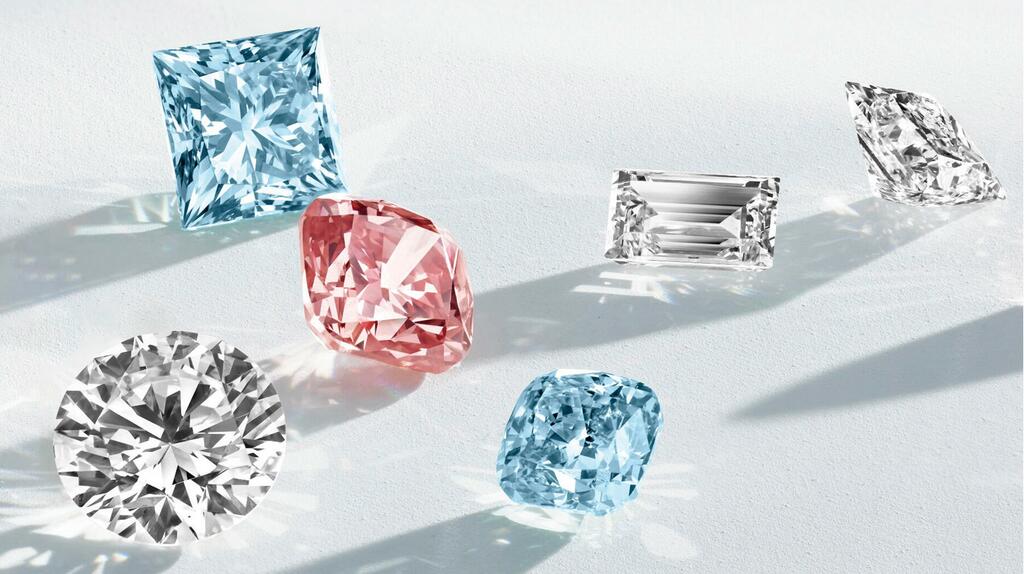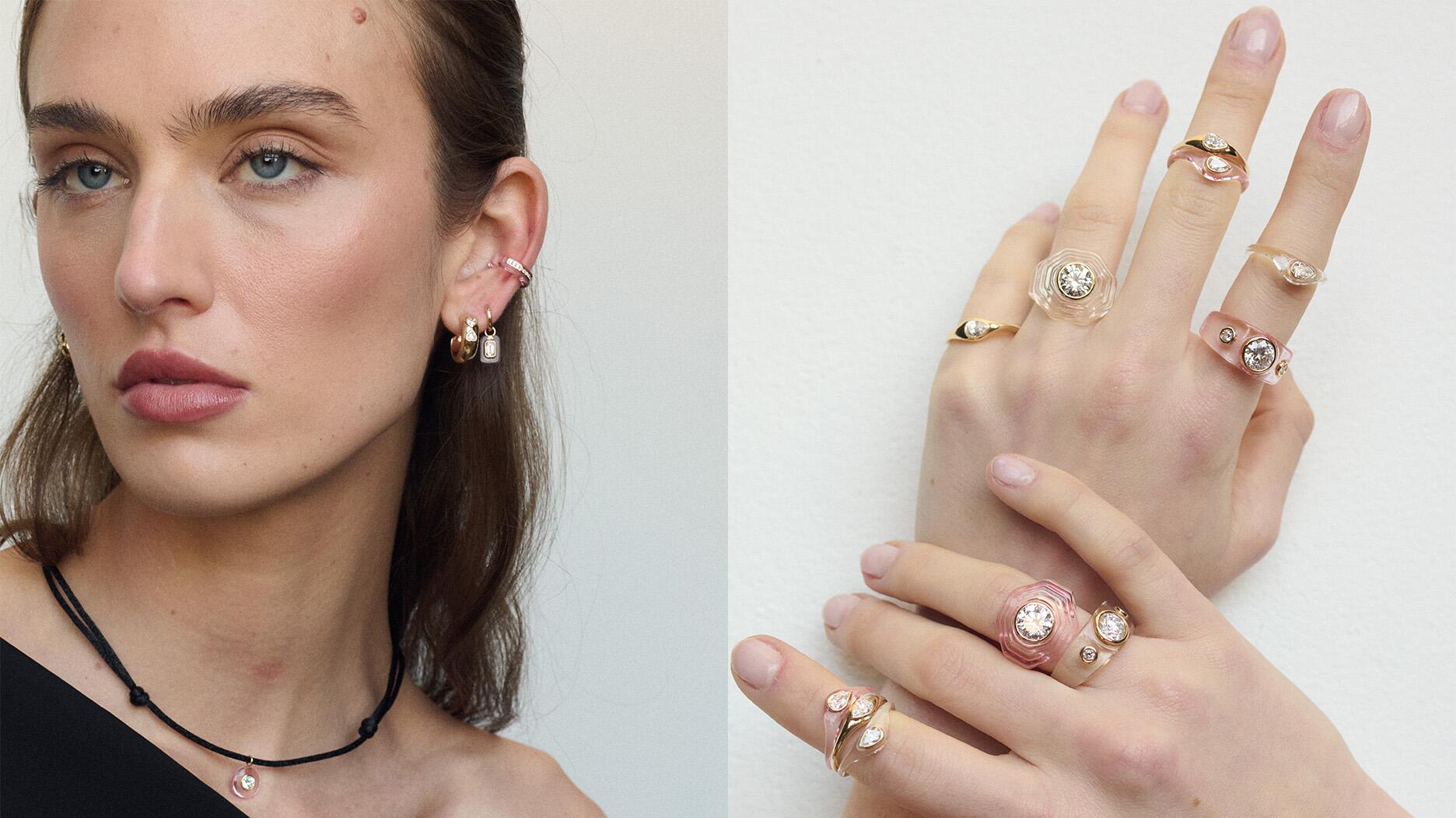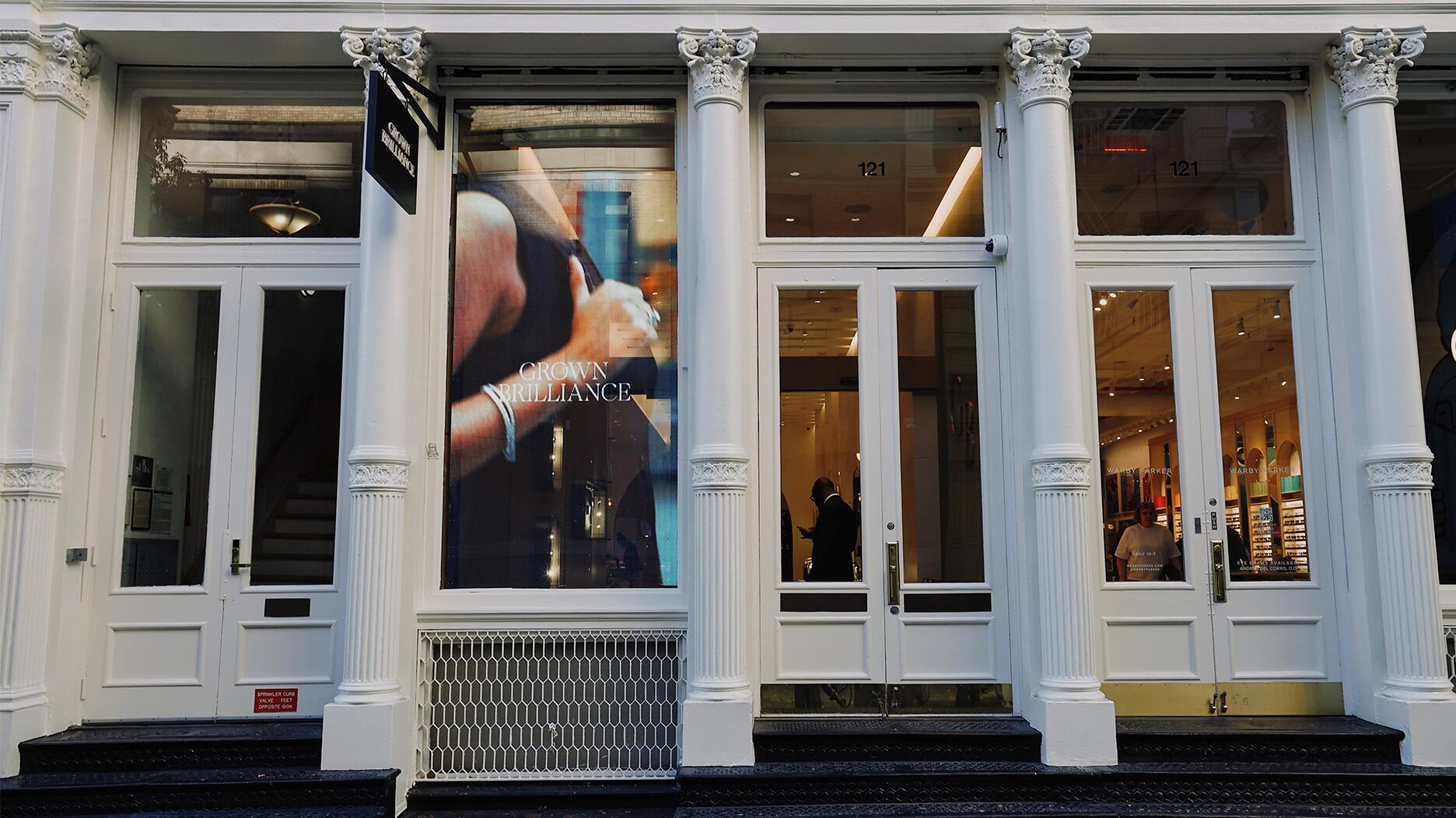An Updated Look at the Lab-Grown Diamond Market: Size, Pricing, and More
As the end of 2022 draws near, National Jeweler offers another deep dive into lab-grown diamond market data.

Earlier this year, National Jeweler examined the estimated size of the market and talked to experts about where it might go in the future, as well as what could drive growth.
As 2022 draws to a close, here’s an updated look at how the year panned out and where opportunities lay in 2023 and beyond.
An Updated Outlook
Diamond market analyst Paul Zimnisky told National Jeweler earlier this year lab-grown jewelry sales could near $8 billion-plus in 2022, approaching 10 percent of the total global diamond jewelry market.
Amid robust consumer demand for lab-growns, Zimnisky has now increased his forecast to $9 billion-$10 billion, which would see lab-grown diamond jewelry accounting for more than 10 percent of total global diamond sales, according to his model.
Market research firm The MVEye also monitors the lab-grown diamond sector.
It currently estimates that the market accounts for 8-10 percent of diamond jewelry sales globally.
The U.S. remains the largest consumer market for lab-grown diamonds by far. Zimnisky said it represents about 80-plus percent of lab-grown diamond jewelry demand, compared with about 50-plus percent of total global diamond jewelry demand.
Sherry Smith from data and consulting company The Edge Retail Academy, which tracks independent jewelers’ sales, offered the following data from the January-June period.
Lab-grown loose diamond sales represented 7 percent of total retail loose sales, an increase from 5.3 percent over the same period in 2021.
Smith noted that larger lab-grown diamonds showed significant increases in most of the key performance indicators.
The 3.25- to 3.50-carat range, for example, showed a 194 percent increase in gross sales, a 114 percent increase in units sold, and a 25 percent increase in average retail sale, suggesting some customers might be trading up in size from smaller natural diamonds.
The 4.5- to 5-carat range recorded a spike of 582 percent in gross sales, and sales in the 5.5- to 6-carat rose 78 percent.
But, Zimnisky said it’s important to keep in mind that lab-grown diamonds are also creating incremental demand for diamond jewelry that wouldn’t otherwise exist.
“Going into the future, I believe that this incremental demand will continue to grow while the share of lab-grown diamonds directly cannibalizing natural will stabilize.
“Once lab-grown diamonds as a product reach maturity, I believe consumers will likely view natural and lab-grown as distinct products, so demand for [the latter] will be driven much more by marketing and not product availability.”
What’s Shaping the Market
The big milestones for the sector this year have come from the major companies, Zimnisky said—Signet has really begun to push the product, and Pandora launched its new lab-grown line in the U.S.
Signet officially got into the lab-grown game a few years back, but this year has started investing in stocking and marketing the sector in a big way.
Pandora, meanwhile, tested its lab-grown diamond jewelry exclusively in the U.K. last year before deciding to bring the product to the U.S. market, its largest, in August of this year.
Both developments will greatly increase the visibility and availability of lab-grown diamonds in the U.S.
Looking ahead, while Zimnisky initially predicted global lab-grown diamond jewelry sales could near the $10 billion mark by 2023, he said he’s now forecasting they will surpass that milestone next year.
Pricing in 2022
Lab-grown diamond prices generally have continued to decline over the last five to seven years, Zimnisky said, adding that as production capabilities improve and global production volume increases, the trend is likely to continue.
He said higher energy prices around the world could stabilize nominal prices in the short term since that input cost is passed on from the producers.
But there’s also been an interesting update for the sector from India—the Indian government has formalized a policy to finance lab-grown diamond producers to help stimulate exports.
News broke in early August that the State Bank of India, the country’s biggest bank, had become the first Indian lender to come up with a formal policy to fund growers.
The loans reportedly come with certain conditions, such as funding the import of machinery rather than supplying working capital.
The move is “a significant catalyst and is likely to lead to a further boom in lab-grown diamond production volumes,” according to Zimnisky, which would continue to affect prices.
What Will Propel the Market
In fact, Zimnisky names increased production/limitless supply as one of the four factors he expects to drive the lab-grown diamond sector’s next phase of growth in a new report.
In addition to limitless supply, he also cited higher quality, branding and proprietary design, and custom shapes and colors.
As production ramps up, diamond-producing technologies will continue to improve, increasing the general quality of the stones but potentially exacerbating the decline in prices.
“Eventually, almost all man-made diamonds will likely be of a universal high quality, which could render grading of lab-diamonds non-necessary ... [which would] further reduce the price of man-made diamonds relative to natural diamonds for consumers,” Zimnisky wrote.
This means branding and proprietary design and custom shapes and colors will be essential for producers who want their product to compete as a luxury item, he added.
(For more on Zimnisky’s report, see this article by National Jeweler Editor-in-Chief Michelle Graff.)

The MVEye also recently conducted research on the consumer groups they believe will drive the market in the future.
Two of those consumer groups are 25- to 38-year-old millennials, but one group, called “In the Know” is already aware of lab-growns through friends or media.
The other, “In the Dark,” haven’t heard of lab-grown diamonds but are easily convinced to learn more.
The MVEye also said it believes a third group dubbed the “Upgraders,” those who are 55 and older and looking to upgrade their engagement rings, could be a powerful segment to propel the growth of lab-grown diamond sales.
This consumer segment is motivated to buy a larger diamond and likes to reward themselves.
“If retailers could bring that across to them [in ads], saying, ‘OK, it’s time to self-reward,’ that’s how they’re going to go get this group,” co-founder Liz Chatelain said to National Jeweler in a recent interview.
“It’s a great opportunity, especially for independent retailers who really know their market.”
The Latest

Set in a Tiffany & Co. necklace, it sold for $4.2 million, the highest price and price per carat paid for a Paraíba tourmaline at auction.

The jeweler’s “Deep Freeze” display showcases its iconic jewelry designs frozen in a vintage icebox.

Take luxury gifting to new heights this holiday season with the jeweler’s showstopping 12-carat sphene ring.

How Jewelers of America’s 20 Under 40 are leading to ensure a brighter future for the jewelry industry.

This year's theme is “Unveiling the Depths of the Ocean.”


In its annual report, Pinterest noted an increase in searches for brooches, heirloom jewelry, and ‘80s luxury.

Starting Jan. 1, customers can request the service for opal, peridot, and demantoid garnet.

Roseco’s 704-page catalog showcases new lab-grown diamonds, findings, tools & more—available in print or interactive digital editions.

The 111-year-old retailer celebrated the opening of its new location in Salem, New Hampshire, which is its third store in the state.

The new catalog features its most popular chains as well as new styles.

The filmmaker’s personal F.P. Journe “FFC” prototype was the star of Phillips’ recent record-setting watch auction in New York.

The new location in the Design District pays homage to Miami’s Art Deco heritage and its connection to the ocean.

Inflations, tariffs, and politics—including the government shutdown—were among consumers’ top concerns last month.

“Longtime favorite” presenters, as well as first-time speakers, will lead talks and workshops at the annual event in Tucson next year.

Silas Smith of Meridian Metalworks won the challenge with his pendant that blends Australian and American landscapes.

The sale of the 31.68-carat, sunset-hued stone was part of Sotheby’s first series of events and auctions in Abu Dhabi.

Most customers who walk into your store this month have made up their minds. Your job is to validate their choice, Emmanuel Raheb writes.

The collection features characters and motifs from Ukrainian folklore, including an enchanted mirror and a magic egg.

MatrixGold 3.11, the newest version of the jewelry design program, offers more flexibility, precision, and creative control.

The pavilion will be part of the 2026 JA New York Spring show, scheduled for March 15 to 17.

Kadet, a 1994 National Jeweler Retailer Hall of Fame inductee, helped grow the family-owned retailer in the Chicago area and beyond.

Billed as the world’s smallest wearable, Lumia Health’s new smart earrings have a health tracker subtly embedded in the back.

Don’t let those with December birthdays feel blue. Help them celebrate their month with blue zircon, turquoise, and tanzanite.

The new pink sapphire version of the piece dances with its wearer in the brand’s “Icons After Dark” holiday campaign.

A choice that’s generated a lot of commentary, Pantone says “Cloud Dancer” marks a fresh start and encourages relaxation and creativity.

The manufacturer’s holiday campaign features a gift guide filled with trending designs and jewelry that can be personalized.

The man was charged with theft, accused of ingesting the necklace while in a jewelry store in Auckland, New Zealand.





























